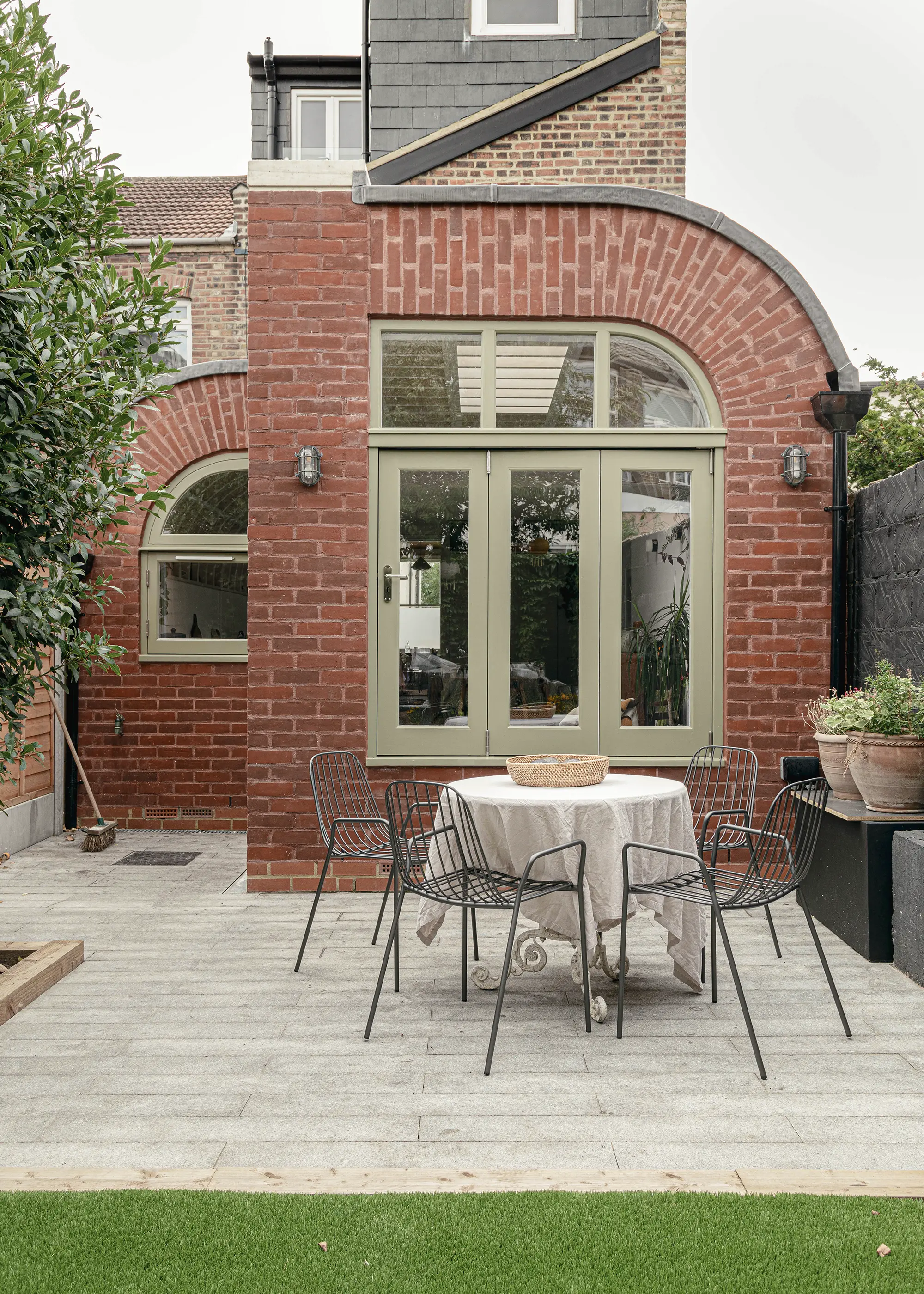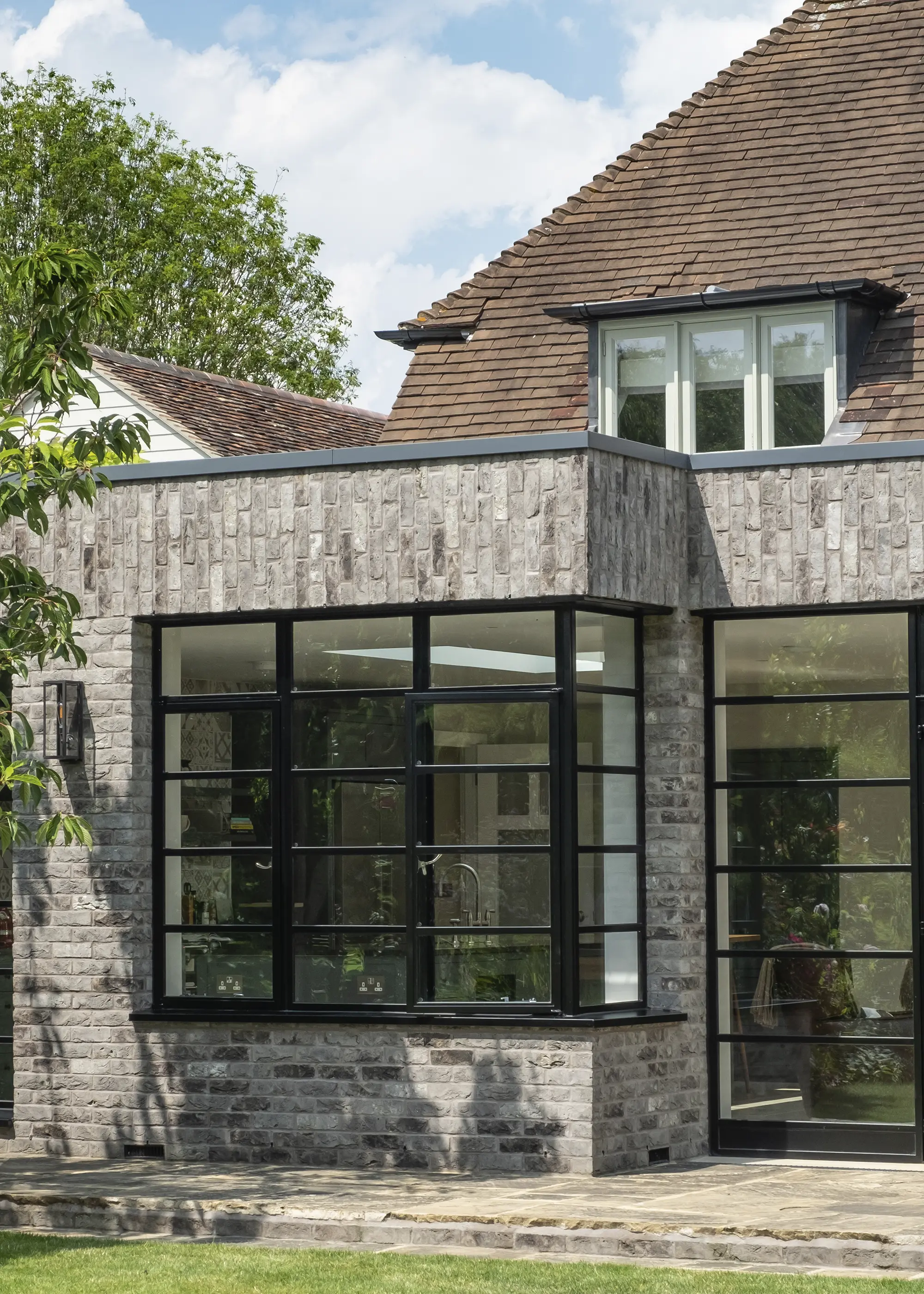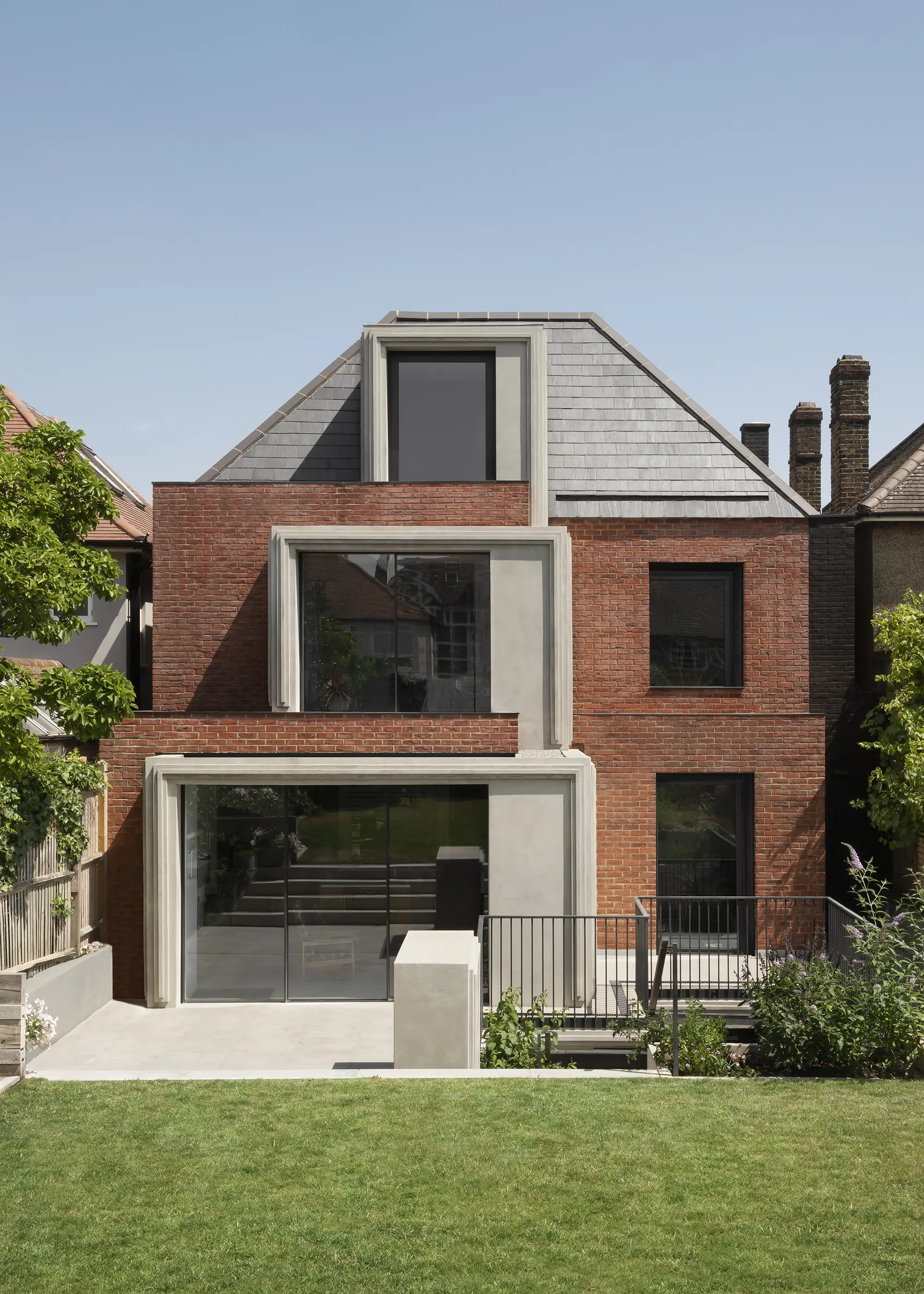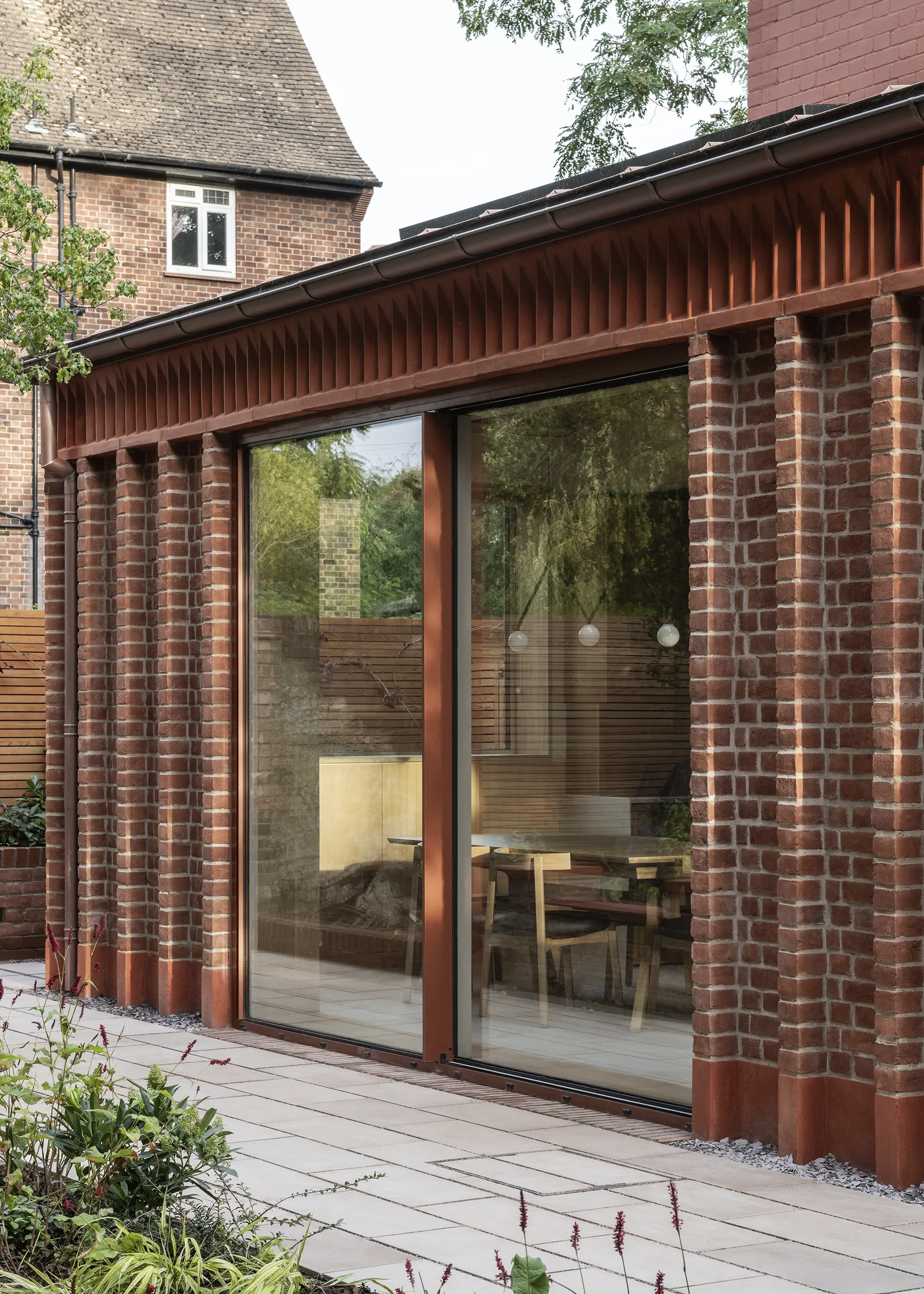
Early Bird Offer! Free tickets to meet independent experts at this summer's Build It Live
Save £24 - Book Now!
Early Bird Offer! Free tickets to meet independent experts at this summer's Build It Live
Save £24 - Book Now!Brick is a UK staple, offering a stylish, weather-resistant and long-lasting finish for homes both new and old. Thanks to the great range of manufacturers and skilled bricklayers in the UK, there’s a vast array of options available both in terms of brick types and how they’re used. So, you can achieve a highly individual finish, whether you’re after something strikingly contemporary or packed with heritage charm.
What’s more, thanks to the material’s versatility, a range of construction methods are suited to being brick clad. “From the time-tested strength of solid brick masonry to the lightweight efficiency of steel framing or stud frame with brick veneer, brick offers a beautiful and functional exterior solution,” says Keith Aldis, CEO of the Brick Development Association (BDA). Well-planned and properly installed, your home’s brick finish can last for generations with little to no maintenance.
Different types of brick will lend themselves to different aesthetics – but a lot comes down to how you use the product. “Choosing an aesthetically pleasing and appropriate brick finish can add serious value to your property, too,” says Mark Lavsevics, sales manager at York Handmade Bricks.
In this guide we’re taking a look at everything you need to know to source bricks for your self build, extension or renovation project, and how you can use them to create a striking finish.
With so many types of brick, blends and bonds to choose from, there’s a lot to think about when specifying a masonry finish. “Do your research to find a brick that matches the design intent of the project,” says Shaun O’Brien, director at Roar Architects.
If you’re adding an extension, decide if you want your addition to blend in with your existing property, or to stand out. Even on a new build house, you may be required to consider the local vernacular and select a finish that will be in keeping with your surroundings.
A key step is to engage with suppliers early on. “Give your manufacturer plenty of time to plan the supply of your brick, particularly if it is a handmade option or you have bespoke shapes and sizes in your design,” advises Mark. The more complex and unique your project, the more important it is that you use a master brickie, whose past projects demonstrate they have the skills to match your expectations. Keep in mind that specifying bespoke bricks will also increase your costs.
More Ideas: Brick Design Ideas: 20 Amazing Ways to Use Masonry in Your Project

Designed by Roar Architects, the form of this unique curved extension is emphasised and framed by the classic brickwork. The selected bricks are a sympathetic update to the traditional finish of the existing Victorian terrace. Khaki green window frames add a stylish contemporary touch to complete the addition that harmonises old with new
On a practical level, while brick is suitable for any build system, there are some considerations to bear in mind with the likes of structural insulated panels SIPs and timber frame. Different types of wall ties and cavity trays may be required to suit your chosen structural system, for instance.
You could also consider moving away from conventional brick and instead specify brick slips. These are essentially thin tiles (either purpose-made or sliced from full bricks) that can be attached to a backing board. The materials cost a little more and there may be less choice than with standard bricks, but slips are quicker to install and can be used to create unique and striking design features.
From classic, rustic red clay brickwork to sleek and smooth, grey machine-made bricks and everything in between, there’s a huge array of products on the market. You can also select unique shapes and sizes, opt for handmade versions or even specify bespoke bricks for your project. One popular option is to select a blend – where you choose, say, two or three different bricks to create a characterful combination.
“BDA members can provide samples to help you visualise different options. Create a test panel and don’t hesitate to experiment with various brick bonds and mortar colours to find a combination that reflects your unique vision and complements the overall design of your project,” says Keith. This can help you in creating a unique finish.

Snell David Architects restored and modernised this Arts and Crafts-style family home in Cambridge with a new kitchen-diner extension. The project involved demolishing an existing lean-to garage and conservatory, replacing it with a new, distinctive flat roof addition clad in a rustic blend of landscape and horizontal grey brickwork. Photo: David Valinsky
On some projects, your choice of brick may be influenced by the existing architecture. “All manufacturers and brick suppliers should offer a brick matching service, either physically on site or online,” says Mark. This is a great way to find bricks that are as close in colour and size to those already used in the building, or prominent in the local area, making it simple to meet local guidelines.
“Even if you’re aiming for a contemporary look, using the same bricks or a similar style to those of the existing property is a great way to harmonise the new addition with your existing home,” says Bogdan Rusu, founding partner at VATRAA Architecture. That doesn’t have to translate to a slavish copy, of course.
You could make an extension project stand out by choosing a different laying pattern or a subtly update the sizes, brick colour, mortar style etc, depending on the new look you want to achieve. This will need careful attention to detail to ensure the addition doesn’t look out of place in its setting.
Learn More: House Cladding Guide: How to Use Cladding Materials in Your Home Project
CLOSER LOOK What’s the difference between handmade and machine-made bricks?
|
Some common laying patterns include, stretcher, running, Flemish and English bond. Stretcher bond is one of the most common choices for new housing in the UK, as it’s easy to build and cost effective. With this style, all the bricks are laid with the longest face on show.
Each course (layer) is then staggered so the vertical mortar joint aligns with the centre of the brick below. Other bonds offer a decorative twist. For instance, Flemish bond alternates the long and short face of the brick along the wall. This option is frequently used to bridge the gap between traditional and modern brick buildings.
Once you’ve selected your bond, you can enhance the design with further aesthetic details. Techniques such as corbelling and protruding brickwork can bring depth and interest to your build, for instance, but require more care and time during construction to achieve a good result.

This new build home by Bureau de change utilises a considered palette of brick and concrete that interlock and harmonise with one another across the property. Pattern-book brick was selected to echo the traditional architecture of the local area
Pointing (the mortar) offers another opportunity to add individuality and enhance the bricks’ appeal. Bucket handle joints are a common choice, creating a durable concave finish. Beaded pointing takes the opposite approach: extra mortar is added between the bricks to create a convex shape, which creates an interesting finish but is more susceptible to damage and so requires more consideration.
Recessed mortar, meanwhile, is often preferred for contemporary projects, with flat pointing set around 4mm behind the face of the brick to add depth and create a striking shadow line. There are many more options for pointing, so be sure to explore all those available to your location and type of project with your design team. Bear in mind you can specify the colour of the mortar, too.
Read More: Building a Brick Home: Everything You Need to Know About Masonry Construction
Standard bricks are readily available through local builders’ merchants, and you may want to use your contractors’ trade account to order them. But if you’re after something more unusual or bespoke, you’ll probably deal directly with the manufacturer or a specialist supplier.
“We often look to source bricks locally,” says Shaun. UK brickmakers are likely to stock or make products well-suited to the vernacular, potentially of local clay, which could help reduce your project’s carbon footprint. But there are, of course, great manufacturers in Europe who offer impressive products widely specified throughout the UK.
Wherever you source your bricks, always check they meet the requisite quality standards, and consider whether you want further reassurances. “The Brick Development Association has instigated a Brickmakers Quality Charter (BQC),” says Mark. “Members who sign up must ensure their products are manufactured sustainably and ethically.”

Situated in a verdant suburban area in Norwich, Grafted Architects upgraded this family home with a geometric precast brick extension that celebrates creativity and craftsmanship. The design calls back to the home’s original red masonry exterior and is characterised by a columnal pattern of corbelled red bricks – flanking a set of full-height glazed sliding doors with rust-coloured frames to ensure a seamless design. Photo: FRENCH + TYE
On extensions, you may be able to reuse bricks from any demolition works (for instance where you’re knocking through existing external walls). “This can reduce the carbon footprint of the project and bring character to your addition,” says Bogdan. “Do your research to find a contractor who is willing to carefully remove and clean your bricks.”
If you do want to use reclaimed bricks, they should be hand selected and sorted so only the best make the cut. For quality work, it pays to engage an experienced brickie. Your supplier, manufacturer or design team may have recommendations, or you could ask neighbours who’ve recently undertaken a project. Either way, if you’re going for anything out of the ordinary, it’s worth visiting past projects so you can understand the quality of the contractor’s work before you appoint them.
Linear bricks are becoming more popular and are available in a variety of widths